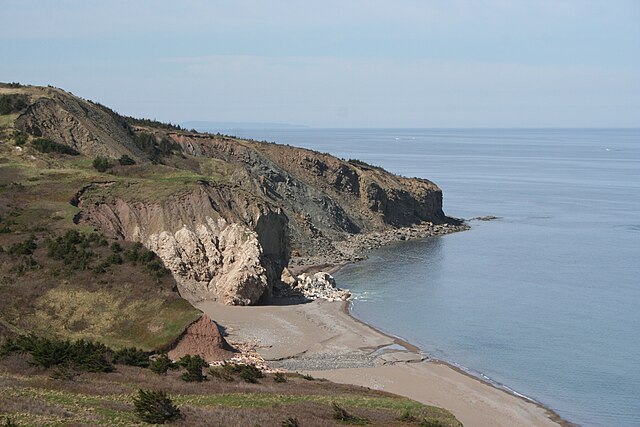A salt dome is a type of structural dome formed when salt intrudes into overlying rocks in a process known as diapirism. Salt domes can have unique surface and subsurface structures, and they can be discovered using techniques such as seismic reflection. They are important in petroleum geology as they can function as petroleum traps.
Astronaut photography of Jashak salt dome (the white area in the middle) in the Zagros Mountains in Bushehr Province, Iran
Salt dome in Fars Province, Iran
Diagram showing formation of salt domes
End-on view of emergent Onion Creek salt dome between remnants of displaced overburden
A dome is a feature in structural geology where a circular part of the Earth's surface has been pushed upward, tilting the pre-existing layers of earth away from the center. In technical terms, it consists of symmetrical anticlines that intersect each other at their respective apices. Intact, domes are distinct, rounded, spherical-to-ellipsoidal-shaped protrusions on the Earth's surface. A slice parallel to Earth's surface of a dome features concentric rings of strata. If the top of a dome has been eroded flat, the resulting structure in plan view appears as a bullseye, with the youngest rock layers at the outside, and each ring growing progressively older moving inwards. These strata would have been horizontal at the time of deposition, then later deformed by the uplift associated with dome formation.
The Richat Structure in the Sahara Desert of Mauritania. Once considered to be an impact structure, it is now classified as a geologic dome uplifted by an underlying igneous intrusion.
Structural dome on Baffin Island, seen in a planation surface.
Oblique aerial photo of Upheaval Dome, Utah. Now considered to be a deeply-eroded impact crater, it was for many years believed to be a salt dome.
Caprock of a salt diapir at Cape Breton, Nova Scotia. The white rocks at left center are the gypsum and anhydrite carapace of the diapir.








